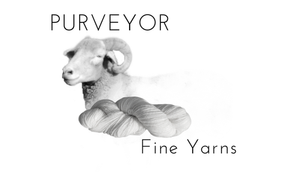Recently sheared Romney (and one Romeldale).
Once the skirting is finished, the bag is closed and waits for the next step.
Romney fleece, grease wool
The next step is washing the wool. Wool straight from the sheep is referred to as grease wool. The “grease” is actually lanolin, a substance that is secreted by the sebaceous glands of the sheep skin. The amount of lanolin in the wool varies between the various breeds of sheep.
very dirty grease wool, soaking in a washing machine that has had the agitator disconnected.
Before wool can be processed a majority of the lanolin must be removed by washing. Washing not only cleans the wool, you lose weight. Merino can lose 50% of its weight going from grease wool to clean wool. The majority of sheep breeds will lose approximately 30% of weight. If I need 50 pounds of clean, dry wool to spin into yarn, if it is Merino wool, I need to start with over 100 pounds of grease wool, to be certain of enough clean wool. With other breeds, one needs to begin with over 70 pounds of grease wool.
There are two things that are needed to cause wool to felt in the wash, hot water and agitation. Hot water (above 140 F) and detergent is necessary to remove the lanolin. If you do not agitate the wool, it will not felt in the wash. There are various methods, mesh baskets in sinks, use of washing machines with the agitator disconnected, and plastic tubs. One needs to have enough space to immerse the wool in very hot water with detergent (dishwashing liquid works well). Let it soak for 30 minutes. Drain the water and spin the wool, or gently lift the wool out and spin it. Then rinse the wool with a soak in clear hot water for 30 minutes. Spin out and repeat. Wool should be laid to dry on racks so that the air circulates both below and above the wool. Old window/door screens make great drying racks.
racks of clean wool drying
After steps one and two, one has lots of clean, dry, wool. How do you know if the wool is clean? If you grab a handful of dry wool, it should not feel sticky. Your hands should not feel sticky after handling it.
I get asked a lot about where the yarn is spun. I like to keep production local, so I use woolen mills in the Midwest. There are two methods of spinning yarn: woolen and worsted (the difference between woolen and worsted deserves a separate discussion). Each method of spinning requires specific equipment. There are basically two types of woolen mill, “mini-mills” and traditional mills. Traditional mills are the technology that drove the industrial revolution. The equipment has not changed much since the 1800’s. Many of the traditional woolen mills in operation today utilize equipment that is over one hundred years old and can be traced back to the woolen mills of Lowell, Massachusetts. This is large, massive equipment that can mangle a body part if you get too close. A traditional mill will have the large card producing a web of fiber for spinning woolen or the card will have a draft to produce sliver for spinning worsted (or semi-worsted). In addition there is the spinning frame, the picker, a plyer, a coner and a skeiner.
A “Mini-mill” is literally a smaller version. All the equipment for a mini-mill will easily fit in a two car garage. In comparison, just the card of a traditional mill would need at least three times that area. There are a couple manufacturers of mini-mill equipment, size varies, but the main factor is the same, the capacity is less than a traditional mill. Mini-mills generally spin semi-worsted, some mini-mills can also spin semi-woolen.
At either mill, the processing is similar. Clean wool is put through a series of processes: a picker to separate the fibers and then a carder to draft the fibers. The drafted fiber (either in woolen preparation or worsted preparation) then goes to the spinning frame. First singles are spun with S twist, then the singles are plied with Z twist. Once spun, the yarn is put on cones and then it can be wound into skeins. Finished skeins are washed to remove the spinning oils and allow the yarn to bloom.
When I drop off fleece at a mill, I tell the operator what type of yarn I want produced. I will request a specific weight and the amount of twist I want on the yarn. Sometimes, at the end of the process, I pick up yarn that is exactly what I ordered. Sometimes the yarn I pick up has no relation to what I ordered, but is perfectly lovely yarn.




